Signed Harold Lasswell First Edition 1927 Propaganda Technique In The World War
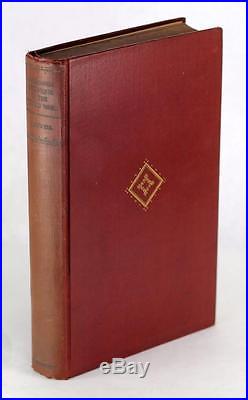
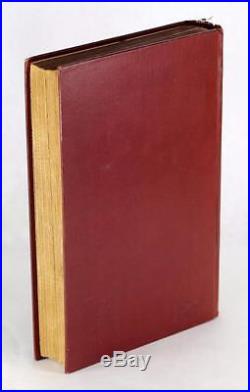
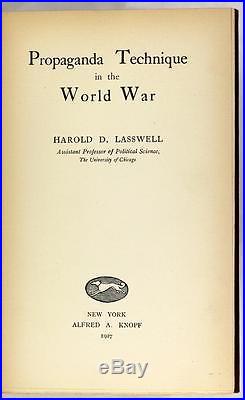
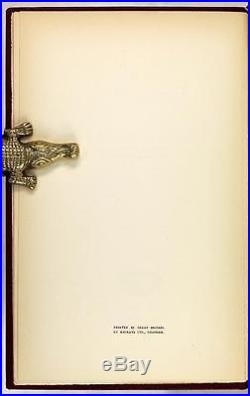
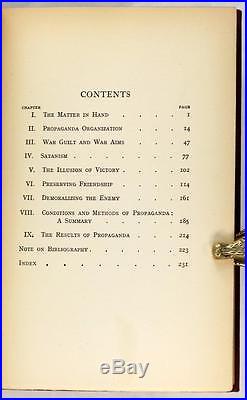
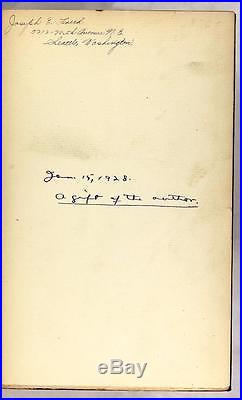
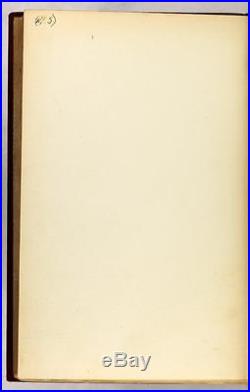

Signed by Harold Lasswell on the FFEP. Bound in red decorated cloth boards with gilt titles present. Boards have light shelf-wear present to the extremities.
Previous owner's name present to the FFEP. Text is clean and free of marks.
He focused on conducting both quantitative and qualitative analyses of propaganda, understanding the content of propaganda, and discovering the effect of propaganda on the mass audience. Lasswell is credited with creating the mass communication procedure of content analysis. Lasswell maintained that a content analysis should take into account the frequency with which certain symbols appear in a message, the direction in which the symbols try to persuade the audience's opinion, and the intensity of the symbols used. By understanding the content of the message, Lasswell sought to achieve the goal of understanding the stream of influence that runs from control to content and from content to audience.
SIGNED HAROLD LASSWELL FIRST EDITION 1927 PROPAGANDA TECHNIQUE IN THE WORLD WAR. Up For Sale Today is. Propaganda Technique in the World War. Lasswell's most well-known content analyses were an examination of the propaganda content during World War One and Two. In Propaganda Technique in the World War,' Lasswell examined propaganda techniques through a content analysis, and came to some striking conclusions.
Lasswell was similar to Ellul, in that he showed that the content of war propaganda had to be pervasive in all aspects of the citizen's life in order to be effective. Furthermore, Lasswell sought to demonstrate that as more people were reached by this propaganda, the war effort would become more effective. Aside from understanding the content of propaganda, Lasswell was also interested in how propaganda could shape public opinion. This dealt primarily with understanding the effects of the media. Lasswell was particularly interested in examining the effects of the media in creating public opinion within a democratic system. Harold Dwight Lasswell (February 13, 1902 December 18, 1978) was a leading American political scientist and communications theorist. He was a PhD student at the University of Chicago, and he was a professor of law at Yale University. He served as president both of the American Political Science Association (APSA) and of the World Academy of Art and Science (WAAS). According to a biographical memorial written by Gabriel Almond at the time of Lasswell's death and published by the National Academies of Sciences in 1987, Lasswell ranked among the half dozen creative innovators in the social sciences in the twentieth century. " At the time, Almond asserted that "few would question that he was the most original and productive political scientist of his time. Areas of research in which Lasswell worked included the importance of personality, social structure, and culture in the explanation of political phenomena. He was noted to be ahead of his time in employing a variety of methodological approaches that later became standards across a variety of intellectual traditions, including interviewing techniques, content analysis, para-experimental techniques, and statistical measurement. Harold Lasswell, a political scientist by training, was a multidisciplinary academic.He could not pigeonhole his work into a single discipline, but instead celebrated the multi-faceted nature of his products. Lasswell was well associated with the disciplines of political science, psychology, and sociology however he did not adhere to the distinction between these boundaries but instead erased the lines drawn to divide these disciplines. Lasswell is well known for his model of communication, which focuses on "Who (says) What (to) Whom (in) What Channel (with) What Effect".
He is also known for his book on aberrant psychological attributes of leaders in politics and business, Psychopathology and Politics, as well as for another book on politics, Politics: Who Gets What, When, and How. He published his first formula in 1948. Lasswell studied at the University of Chicago in the 1920s, and was highly influenced by the pragmatism taught there, especially as propounded by John Dewey and George Herbert Mead. However, more influential on him was Freudian philosophy, which informed much of his analysis of propaganda and communication in general. During World War II, Lasswell held the position of Chief of the Experimental Division for the Study of War Time Communications at the Library of Congress. He analyzed Nazi propaganda films to identify mechanisms of persuasion used to secure the acquiescence and support of the German populace for Hitler and his wartime atrocities.Always forward-looking, late in his life, Lasswell experimented with questions concerning astropolitics, the political consequences of colonization of other planets, and the "machinehood of humanity". In his presidential address to the American Political Science Association, he raised the famous question, demanded by the expulsion of essences from the sciences, [citation needed] of whether or not we should give human rights to robots.
Lasswell's work was important in the post-World War II development of behavioralism. Similarly, his definition of propaganda was also viewed as an important development to understanding the goal of propaganda.Lasswell's studies on propaganda produced breakthroughs on the subject which broadened current views on the means and stated objectives that could be achieved through propaganda to include not only the change of opinions but also change in actions. He inspired the definition given by the Institute for Propaganda Analysis: Propaganda is the expression of opinions or actions carried out deliberately by individuals or groups with a view to influence the opinions or actions of other individuals or groups for predetermined ends through psychological manipulations. Lasswell utilized Sigmund Freuds methodology. Upon studying in Vienna and Berlin with Theodor Reik, a devotee of Freud, Lasswell was able to appropriate Freuds methods. Lasswell built a laboratory in his social science office.
It was here that he conducted experiments on volunteers, students, at the University of Chicago Using this instrument, he was able to measure the participants emotional state to their spoken words. Lasswell was furthermore able to use psychoanalytical interviewing and recording methods that he appropriated from his time of studying with Elton Mayo at Harvard University. Lasswell was a behavioral revolution proponent. Lasswell was credited with being the founder of the field of political psychology and was the man at which the concepts of psychology and political science intersected.
By utilizing psychoanalytic biographies of political leaders, he expanded the base from which potential evidence could be garnered. The benefit of this contribution is that he was able to engage in another method of research content analysis.By being able to use preexisting data, he was in a position to show that his work was not purely positivist but also stepped into the realm of interpretivist as well helping him to come together in studies of personality and culture in tandem with his political behavior research. Content analysis is the investigation of communication messages by categorizes message content into classifications in order to measure certain variables While the data existed to Lasswell in the form of analyzing the messages that Allied and Axis armies disseminated within warfare, it may not have been the most accurate of methodologies for analyzing the data.
Content analysts usually seeks to infer the effects of the messages that they have analyzed, although actual data about such communication effects are seldom available to the content analyst While Lasswell was able to perform this particular type of analysis, the weakness to this was that Lasswell could not verify his data due to communication effects not actually being available. This is because content analysis cannot study effects. While this was a weakness, he did develop content analysis as a communication tool that is still utilized today Leo Rosten included an appreciation of him in "People I have loved, known or admired".
His five-questions model of communication led to the emphasis in communication study on determining effects. Lazarsfeld, did even more to crystallize this focus on communication effects. He pioneered in content analysis methods, virtually inventing the methodology of qualitative and quantitative measurement of communication messages (propaganda messages and newspaper editorials, for example). His study of political and wartime propaganda represented an important early type of communication study. The word propaganda later gained a negative connotation and is not used much today, although there is even more political propaganda.
Propaganda analysis has been absorbed into the general body of communication research. He introduced Freudian psychoanalytic theory to the social sciences in America.
Lasswell integrated Freudian theory with political analysis, as in his psychoanalytic study of political leaders. He applied Freud's id-ego-superego via content analysis to political science problems. In essence, he utilized intraindividual Freudian theory at the societal level. He helped create the policy sciences, an interdisciplinary movement to integrate social science knowledge with public action.The social sciences, however, generally resisted this attempt at integration and application to public policy problem. OUR MISSION STATEMENT: Our goal is to provide the best books for the lowest prices. Thank you for visiting this listing and we hope to see you again soon!
Book formats and corresponding sizes. Approximate cover size (width × height). ALL ITEMS ARE DESCRIBED TO THE BEST OF MY ABILITY!IF THE DESCRIPTION AND THE PHOTOS DO NOT MATCH THE PHOTOS TAKE PRECEDENCE! ALL ITEMS ARE PACKED IN A WATERPROOF CUSTOM FITTED BAG, WRAPPED IN 2 LAYERS OF BUBBLE WRAP AND THEN PLACED INTO A CUSTOM FITTED CARDBOARD MAILER. IF YOU DO WIN MULTIPLE ITEMS, PLEASE DO NOT PAY FOR THEM INDIVIDUALLY! PLEASE WAIT FOR THE INVOICE! WE WILL TRY TO PUT UP NEW AUCTIONS EVERY DAY!
Get Supersized Images & Free Image Hosting. Create your brand with Auctiva's. Attention Sellers - Get Templates Image Hosting, Scheduling at Auctiva. The item "SIGNED HAROLD LASSWELL FIRST EDITION 1927 PROPAGANDA TECHNIQUE IN THE WORLD WAR" is in sale since Wednesday, June 21, 2017. This item is in the category "Books\Antiquarian & Collectible".The seller is "lastexitbooks" and is located in Brooklyn, New York. This item can be shipped worldwide.
- Subject: Philosophy
- Topic: Political Theory; Media Studies
- Original/Facsimile: Original
- Binding: Hardcover
- Special Attributes: 1st Edition
- Publisher: Alfred A. Knopf
- Place of Publication: New York
- Year Printed: 1927
- Author: Harold Lasswell
- Region: North America
- Language: English
- Country/Region of Manufacture: United States
- Character Family: Propaganda Techniques
